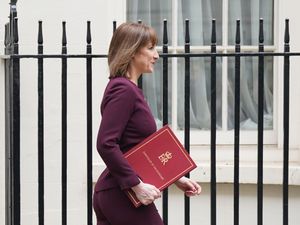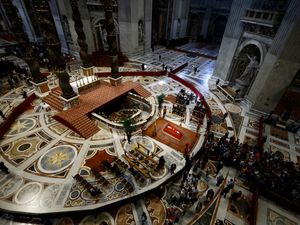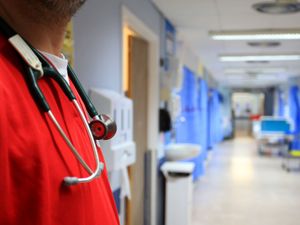How the Brexit saga unfolded
The full text of the agreement has now been published.

Arguments about the UK’s place in Europe have been raging for decades, but it was not until 2013 that the public were promised the chance to have their say.
Here are the key moments in the Brexit saga since:
– January 23 2013
Under intense pressure from many of his own MPs and with the rise of Ukip, prime minister David Cameron promises an in-out referendum on EU membership if the Conservatives win the 2015 general election.
– May 7 2015
The Tories unexpectedly make sweeping gains over Ed Miliband’s Labour Party and secure a majority in the Commons. Mr Cameron vows to deliver his manifesto pledge of an EU referendum.
– June 23 2016
The UK votes to leave the EU in a shock result that sees 52% of the public support Brexit and Mr Cameron quickly resigns as prime minister.
– July 13 2016
Theresa May takes over as prime minister. Despite having backed Remain, she promises to “rise to the challenge” of negotiating the UK’s exit.
– November 10 2016
The High Court rules against the Government and says Parliament must hold a vote to trigger Article 50 of the Treaty on European Union, the mechanism that begins the exit from the EU. Mrs May says the ruling will not stop her from invoking the legislation by April 2017.
– March 29 2017
Mrs May triggers Article 50. European Council president Donald Tusk says it is not a happy occasion, telling a Brussels press conference his message to the UK is: “We already miss you. Thank you and goodbye.”
– April 18 2017
Mrs May announces a snap general election to be held on June 8.
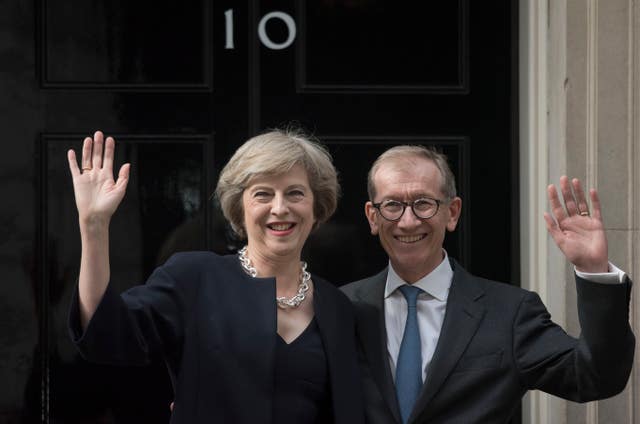
– June 8 2017
There is humiliation for Mrs May as she loses her Commons majority after her election gamble backfires. She becomes head of a minority Conservative administration propped up by the Democratic Unionist Party.
– September 22 2017
In a crucial Brexit speech in Florence, Mrs May sends a message to EU leaders by saying: “We want to be your strongest friend and partner as the EU and UK thrive side by side.” She says she is proposing an “implementation period” of “around two years” after Brexit when existing market access arrangements will apply.
– March 19 2018
The EU’s chief negotiator Michel Barnier says he and Brexit secretary David Davis have taken a “decisive step” towards agreeing a joint legal text on the UK’s EU withdrawal but warns there are still outstanding issues relating to the Irish border.
– July 6 2018
A crunch Cabinet meeting at Chequers agrees Mrs May’s new Brexit plans, including the creation of a new UK-EU free trade area for goods. But not all who attend are happy with the compromises.
– July 8 and July 9 2018
Mr Davis resigns from the Government in protest while the following day Boris Johnson quits as foreign secretary, claiming the plans mean “we are truly headed for the status of colony” of the EU.
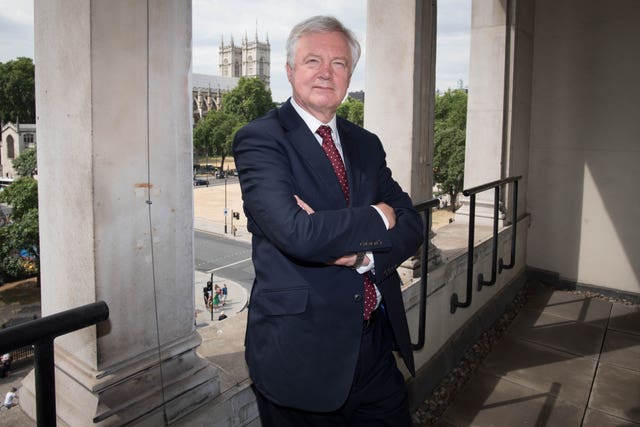
– November 14 2018
In a statement outside 10 Downing Street after a five-hour Cabinet meeting, Mrs May says the Cabinet has agreed the draft Brexit Withdrawal Agreement.
– November 15 2018
Dominic Raab resigns as Brexit secretary, saying he “cannot in good conscience support the terms proposed for our deal with the EU”. Other resignations follow.
– November 25 2018
The 27 EU leaders endorse the Brexit deal.
– December 12 2018
Mrs May survives an attempt to oust her with a vote of no confidence as Tory MPs vote by 200 to 117 in the secret ballot in Westminster.
– January 15 2019
MPs reject Mrs May’s Brexit plans by an emphatic 432 to 202 in an historic vote which throws the future of her administration and the nature of the UK’s EU withdrawal into doubt.

– March 20 2019
Mrs May tells the House of Commons that she has written to Mr Tusk to request an extension to Article 50 Brexit negotiations to June 30.
– March 29 2019
MPs reject Mrs May’s Withdrawal Agreement for a third time – by 286 votes to 344 – on the day the UK was due to leave the EU.
– April 10 2019
The EU agrees a “flexible extension” to Brexit until October 31. Mrs May says the “choices we now face are stark and the timetable is clear”.
– May 23 2019
Nigel Farage’s Brexit Party comes out on top in the European elections, while the pro-EU Liberal Democrats also make gains.
– May 24 2019
Mrs May announces she is standing down as Tory Party leader on June 7. She says: “It is and will always remain a matter of deep regret to me that I have not been able to deliver Brexit.”
– July 23 2019
Mr Johnson is elected as leader of the Conservative Party and becomes the UK’s new Prime Minister after defeating Jeremy Hunt.

– August 20 2019
The new Prime Minister is rebuffed by European Commission president Jean-Claude Juncker after demanding major changes to Irish border arrangements in a new Brexit deal.
– August 28 2019
The Queen is dragged into the Brexit row as Mr Johnson requests the prorogation of Parliament from early September to mid-October.
– September 4 2019
MPs vote to approve legislation aimed at preventing a no-deal Brexit. Mr Johnson orders a purge of rebel Tories who opposed the Government including former chancellors Philip Hammond and Sir Kenneth Clarke.
The Prime Minister attempts to trigger an early general election but fails to get the required support of two-thirds of MPs.
– September 24 2019
The Supreme Court rules that the PM’s advice to the Queen to suspend Parliament until October 14 was unlawful because it had the effect of frustrating Parliament.
– October 2 2019
Mr Johnson puts forward his formal Brexit plan to the EU, revealing his blueprint to solve the Irish border issue.

– October 10 2019
Mr Johnson and taoiseach Leo Varadkar say they can see a “pathway to a deal”, in a joint statement after key talks at a luxury hotel in Cheshire.
– October 17 2019
After intense negotiations, the Prime Minister announces the UK has reached a “great deal” with the EU which “takes back control” and means that “the UK can come out of the EU as one United Kingdom – England, Scotland, Wales, Northern Ireland, together”.
– October 19 2019
In the first Saturday sitting of the Commons in 37 years, Mr Johnson seeks the support of MPs in a “meaningful vote” on his new deal but instead they back an amendment forcing him to seek a delay.
– October 22 2019
The Prime Minister mounts an attempt to fast-track his Brexit deal through Parliament but puts the plans on ice after MPs vote against his foreshortened timetable.
– October 28 2019
EU leaders agree to a second Brexit “flextension” until January 31 unless Parliament ratifies the deal sooner.
– October 29 2019
Mr Johnson finally succeeds at the fourth attempt in winning Commons support for a general election on December 12.
– December 12 2019
Having campaigned on a promise to “get Brexit done”, Mr Johnson secures a landslide win at the election with an 80-seat majority.

– January 8 2020
New European Commission president Ursula von der Leyen visits No 10 to warn Mr Johnson the timetable for a post-Brexit trade deal is “very, very tight”. The Prime Minister is clear however there will be no extension to the transition period, which expires at the end of 2020.
– January 9 2020
Mr Johnson gets his Brexit deal through the Commons as the European Union (Withdrawal Agreement) Bill is given a third reading with a majority of 99.
– January 31 2020
A clock projected on the walls of Downing Street counts down the moments to the UK’s departure from the EU at 11pm.
– March 2 2020
Mr Barnier and Mr Johnson’s chief EU adviser Lord Frost open formal talks in Brussels on Britain’s future relationship with the bloc, including a free trade agreement.
– March 12 2020
The two sides announce they are suspending face-to-face talks due to the coronavirus pandemic and will explore the options for continuing the negotiations by video conferencing.
– June 12 2020
Cabinet Office Minister Michael Gove formally tells the EU the UK will not sign up to an extension to the transition period, but he backtracks on plans to immediately introduce full border checks with the bloc on January 1.
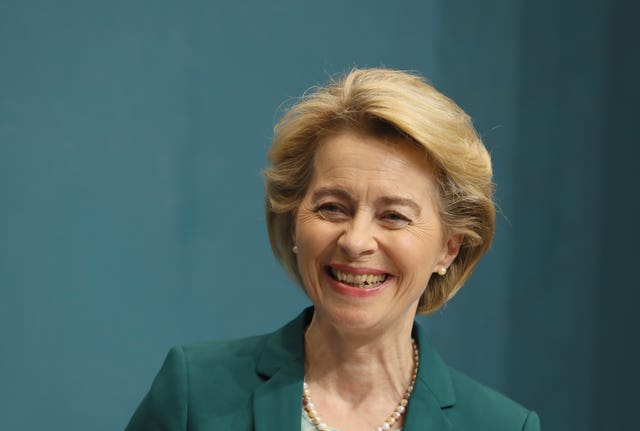
– September 10 2020
The European Commission threatens the UK with legal action after ministers announce plans for legislation enabling them to override provisions in the Withdrawal Agreement relating to Northern Ireland in breach of international law.
– October 16 2020
Mr Johnson says he is halting talks on a trade deal, accusing EU leaders meeting for a summit in Brussels of seeking to impose “unacceptable” demands.
– November 7 2020
Mr Johnson and Mrs von der Leyen agree to “redouble” their efforts to get a deal while acknowledging that significant differences remain over fisheries and the so-called “level playing field” for state aid rules.
-December 4 2020
Lord Frost and Mr Barnier announce in a joint statement the conditions for an agreement had still not been met and negotiations will be put on “pause” to allow political leaders to take stock, with Mr Johnson and Mrs von der Leyen to engage in emergency talks.
– December 9 2020
Mr Johnson and Mrs von der Leyen dine at the European Commission, with talks between the two leaders lasting around three hours and ending in an agreement to have further discussions, but that a “firm decision” should be taken about the future of the talks by Sunday.
– December 13 2020
Following a phone call, Mr Johnson and Mrs von der Leyen agree to another extension of talks to “go the extra mile” to find a breakthrough. Mr Johnson says there is a “deal to be done” with the EU but adds the two sides are “very far apart” on key issues and Britain is still ready to trade on WTO terms in the new year.
– December 17 2020
The Prime Minister and European Commission president talk on the phone again to take stock of the discussions, just hours after Mr Gove tells MPs the chances of a deal were “less than 50%”.
The two sides both say progress has been made but there are still “fundamental” differences, with fisheries again a sticking point. Mr Johnson describes the continuing negotiations as being in a “serious situation”, adding an agreement was not likely, with time “very short”.
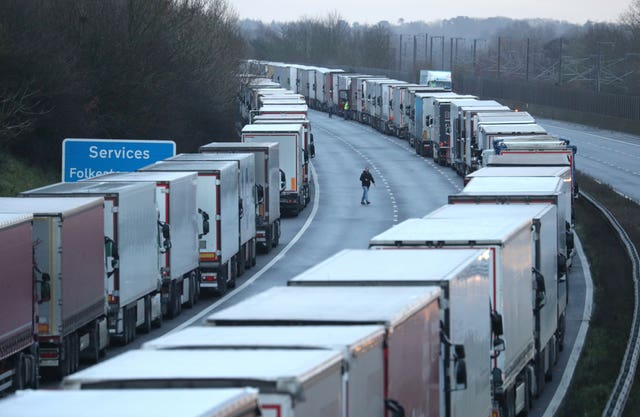
– December 20 2020
France joins several other European countries in banning travel from the UK, including freight, due to a new coronavirus strain found in Britain, causing the Port of Dover to close. Huge queues of lorries build up on the M20, prompting fears the same could happen in the event of no trade deal being secured.
– December 21 2020
Transport Secretary Grant Shapps says there is no chance of extending the transition arrangements beyond December 31 because it would “add fuel to the fire” by adding extra uncertainty.
Meanwhile, Mr Johnson updates the country on the travel ban and reveals he has spoken to French President Emmanuel Macron to try to find a resolution, but that they “decided not to speak about Brexit”.
– December 22 2020
An agreement is reached with France to reopen the border, allowing lorry drivers through if they have had a negative Covid test. Mr Barnier briefs EU ambassadors and MEPs and tells them talks are at a “crucial moment”, while Mr Johnson remains in “close contact” with Mrs von der Leyen.
– December 23 2020
Optimism grows throughout the day a deal is about to reached and a Downing Street source says it is “possible, but far from certain”.
– December 24 2020
A post-Brexit trade deal is secured by negotiators from the UK and the European Union. Mr Johnson says the UK had managed to “take back control” as promised in the 2016 referendum.
Mrs von der Leyen says it was a fair and balanced deal, adding “it is time to leave Brexit behind”. Meanwhile, Sir Keir Starmer says Labour will “accept it and vote for it” when the deal with the EU reaches Parliament.
Mr Johnson calls the Queen for an audience during the afternoon, according to the Palace court circular.
– December 26, 2020
The full text of the trade deal is published shortly before 9am, with the document running to up to 1,255 pages.


